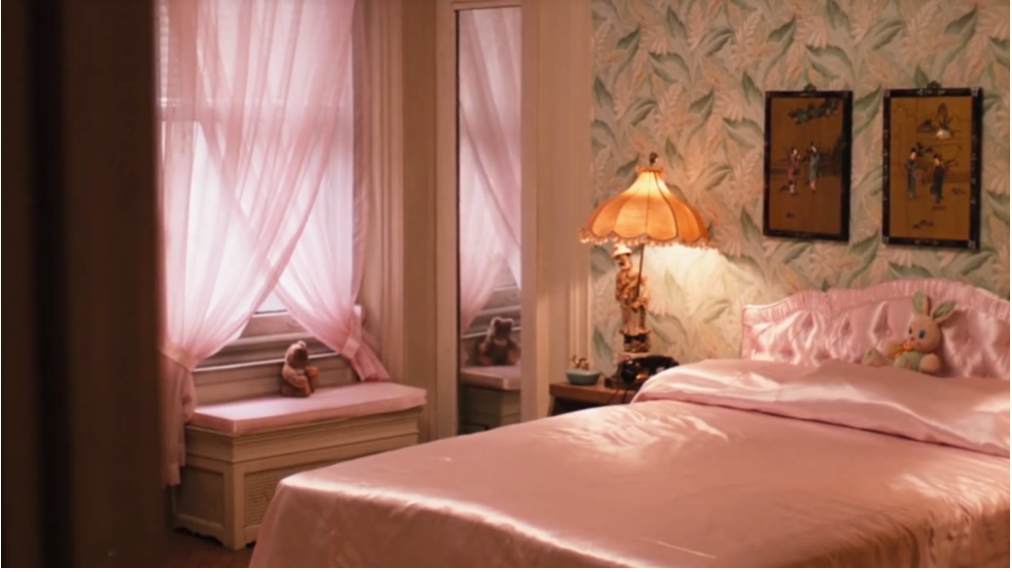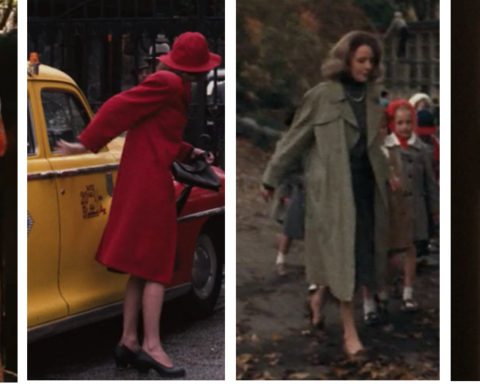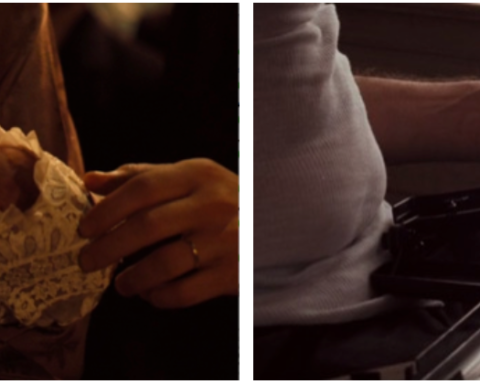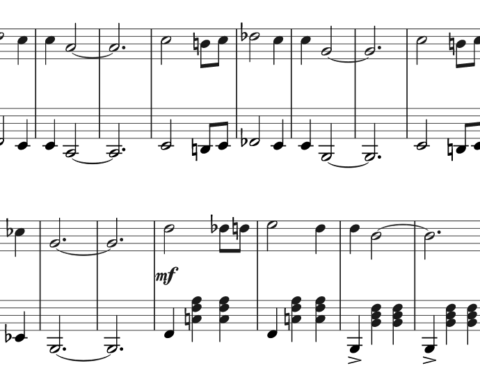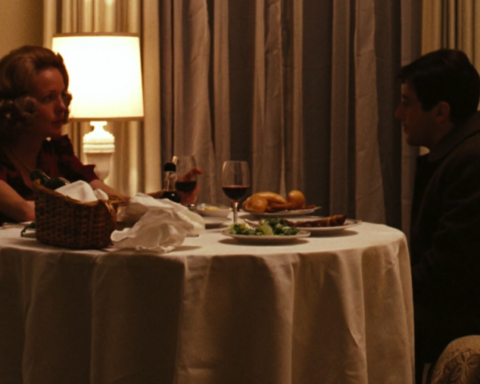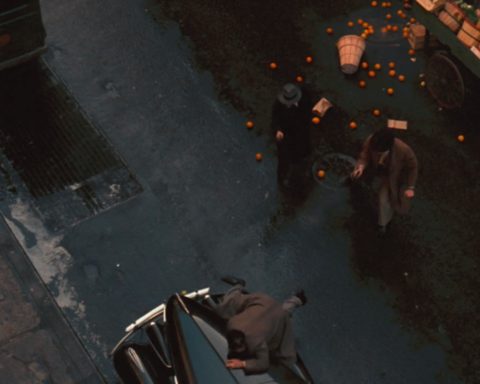Cinema is a medium that, even in the more progressive present, is largely dominated by men. As Laura Mulvey has famously suggested, this domination has caused a clear masculine bias in how films are shot and presented to viewers who, sometimes unknowingly, consume examples of harmful masculinity. In her landmark essay “Visual Pleasures and Narrative Cinema,” Mulvey identifies some of these harmful techniques—prominent among them the scopophilia of the male-directed camera and the sadistic punishment of women—while citing Alfred Hitchcock’s films as prime examples.
Yet there is often a complex relationship between the larger tradition of male-dominated cinema and the work of a single director—as might be seen in the case of Francis Ford Coppola’s The Godfather. Though the New Hollywood of the 1970s often reinforced “the male gaze,” Coppola deliberately does not use the more popular approach of sadistic punishment, rejecting the Hitchcockian way of violence. What is most interesting about The Godfather, though, is how it negates these conventions: Coppola created innovation not only through his manipulation of the film’s formal elements, but also through its depictions of the punishment of women.
The Godfather is a film that is obsessed with depicting male abjection—abjection understood with reference to Julia Kristeva’s “Approaching Abjection,” which defines the abject as something that is unsafely other; something that is not a definition of the self, but is within the self; something that is not a symbol of death or decay or other forms of shame within the self, but evidence that these shameful processes exist despite the self’s attempts to suppress them. More than an abstract concept, the “abject” evokes the repressed elements of the body, with fluids like blood, vomit, and feces being the best example. Not only is The Godfather obsessed with showing the moral decay of its male characters, but when it comes to the depictions of violence, male violence is shown in its entirety, with no restrictions obscuring any form of abjection.
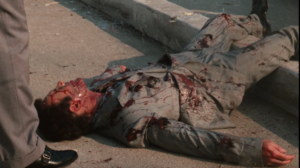
The most violent onscreen male death, in terms of the abject, is the death of Sonny Corleone. Seemingly punished for his own insatiable rage and confidence in elements of traditional masculinity, Sonny is murdered in full view. When his death begins, he is seated inside his car as the bullets begin to pierce his body and cause visible bleeding, visible abjection. His death does not end in the obstructed view of the car, however, and continues as he steps outside, not allowing a moment of rest during his hyper-violent massacre. If there is a depiction of sadistic punishment in the film, it arrives through Sonny’s death, as he is punished for being too masculine; his protracted death is performed for the unobstructed view of the camera, and so he perishes with his abjection, shame, and decay in full view—dehumanized in his demise.
The same hyperviolent treatment is not extended to the women in the film. The death that is most violent in nature and outcome is the murder of Michael’s Italian wife Apollonia, and although the manner in which she dies is harsh , the impact of this death is not as evident because of the scene’s lack of visual violence. The car explodes in full view, but we do not see the full impact of the violence on her body. The violence against her is lethal, but there is no abjection present to further shame her. The violence is instantaneous; there’s no prolonging of the agony.
***
The sequence which comes closest to the Hitchcockian tradition of sadistic punishment is the sequence in which Connie gets beaten by her husband after reacting emotionally to a call that seems to indicate an affair. Still, even though this scene is set up for an act of sadistic punishment against women, Coppola refuses to use the Hitchcockian conventions, instead allowing Connie to be punished off screen: doorways obstruct the violence, setting it in a closed space that is not completely explored by the camera. The moments in which Connie is being visibly abused by her husband are few throughout the scene, but while we see the belt hitting her body, we do not see any signs of abjection. She does not bleed, she does not bruise, she only screams in an act which alludes to pain, but does not provide proof of its existence as blood does. Both Connie and Sonny’s punishments end in a scream, but while Sonny is in an open space, Connie is out of the frame.
In the scene of Connie’s beating, the camera represents a reluctant voyeur—one who is curious, perhaps horrified, at the abuse, but does not feel the need to insert him- or herself into the scene.
Moreover, because of its frequent placement behind doorways, the camera in this scene does not identify with Carlo, the masculine punisher, as it would in the Hitchcockian convention. To make a fine but necessary distinction: the scene is voyeuristic, but not in a scopophilic sense. The camera looms over places of domesticity, but it does not fixate on the female. Instead, the camera represents a reluctant voyeur, one who is curious, perhaps horrified, at the abuse, but does not feel the need to insert him- or herself in these scenes of violence, and instead observes quietly and curiously as violence is committed.
Violence and punishment in film do not necessarily need to relate to the physical or the abject. In some cases, violence can be considered a destructive force separate from the physical. Although Coppola may reject American cinema’s tradition of sadistic punishment, there are definite limits on how he chooses to imagine the women in his film. In the same sequence, in which Connie is a victim of domestic abuse, the mise-en-scene conveys the limits within which Connie imagines herself and lives her life. The spaces she inhabits—and destroys—are filled with staples of domesticity. Connie breaks plates in the kitchen, she tears up the dining room, and she gets beaten in the bedroom.
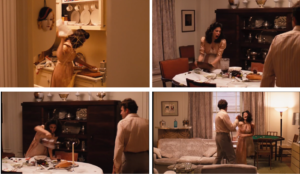
Yet even when Connie has the brief power to act on her own agency and destroy, she is only allowed to destroy within the confines of her stereotypical gender roles. While she does spill the chips of the living room’s poker table—the only masculine objects she touches in the scene—they are not damaged beyond repair like the other objects in the home.
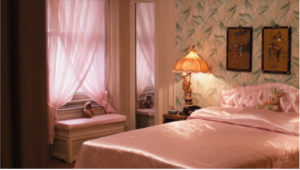
When the sequence comes to an end, the camera lingers on the image of the bedroom, which matches Connie’s own infantilized image. The bedsheets and curtains are in the same shade of pink as her silk nightgown, a shade of pink that is most often associated with a youthful femininity and innocence, one which codes the wearers as delicate or fragile. On top of the silk bedsheets is a stuffed rabbit, another object which signifies Connie as a girl, not a woman. A girl to be disciplined and controlled by the patriarchal figures of her father, brothers, and husband, not a woman with her own sense of agency. Lastly, the images of Japanese women in kimonos that hang over her bed reinforce this impression: not only do they signify an obvious fragility and femininity, but also these images have been fetishized in the West, and falsely and unjustly associated with submissiveness. The combination of these two indicators of femininity—the softness and fragility of the pinks; the submissive and silent geishas frame Connie as a person who is expected, simply, to please her man and submit to him.
In the end, the acts of violence against Connie were used as bait to lure Sonny to his death, furthering the constraints women face in the universe of The Godfather. They exist only as objects for the men to use, whether it be sexually, romantically, in the roles of cooks and housewives, or as pawns in their never-ending battle to maintain their hyper-masculine ideas of dominance. While Coppola does not necessarily partake in the traditional on-screen, voyeuristic violence against women as seen in classic Hollywood films, The Godfather perpetuates the oppression against women in the sense of confining them to spaces and roles that reduce them to ideas of submissive beings without agency. Coppola gives us, then, both an untraditional way of framing them through his camera and a traditional way of framing women, in a larger sense, as characters.
Julia Delgadillo (Cal ’18) is a senior majoring in Film Studies and an aspiring writer/director. She is currently writing a senior thesis titled Monsters of the Mind: Manifestations of Mental Illnesses in Contemporary Horror Films.
Works Cited
Laura Mulvey, “Visual Pleasure and Narrative Cinema,” Film Theory and Criticism: Introductory Readings, eds. Leo Braudy and Marshall Cohen (New York: Oxford University Press, 1999), 833-44.
Julia Kristeva and John Lechte, “Approaching Abjection,” Oxford Literary Review 5:1/2 (1982), 125-149.

